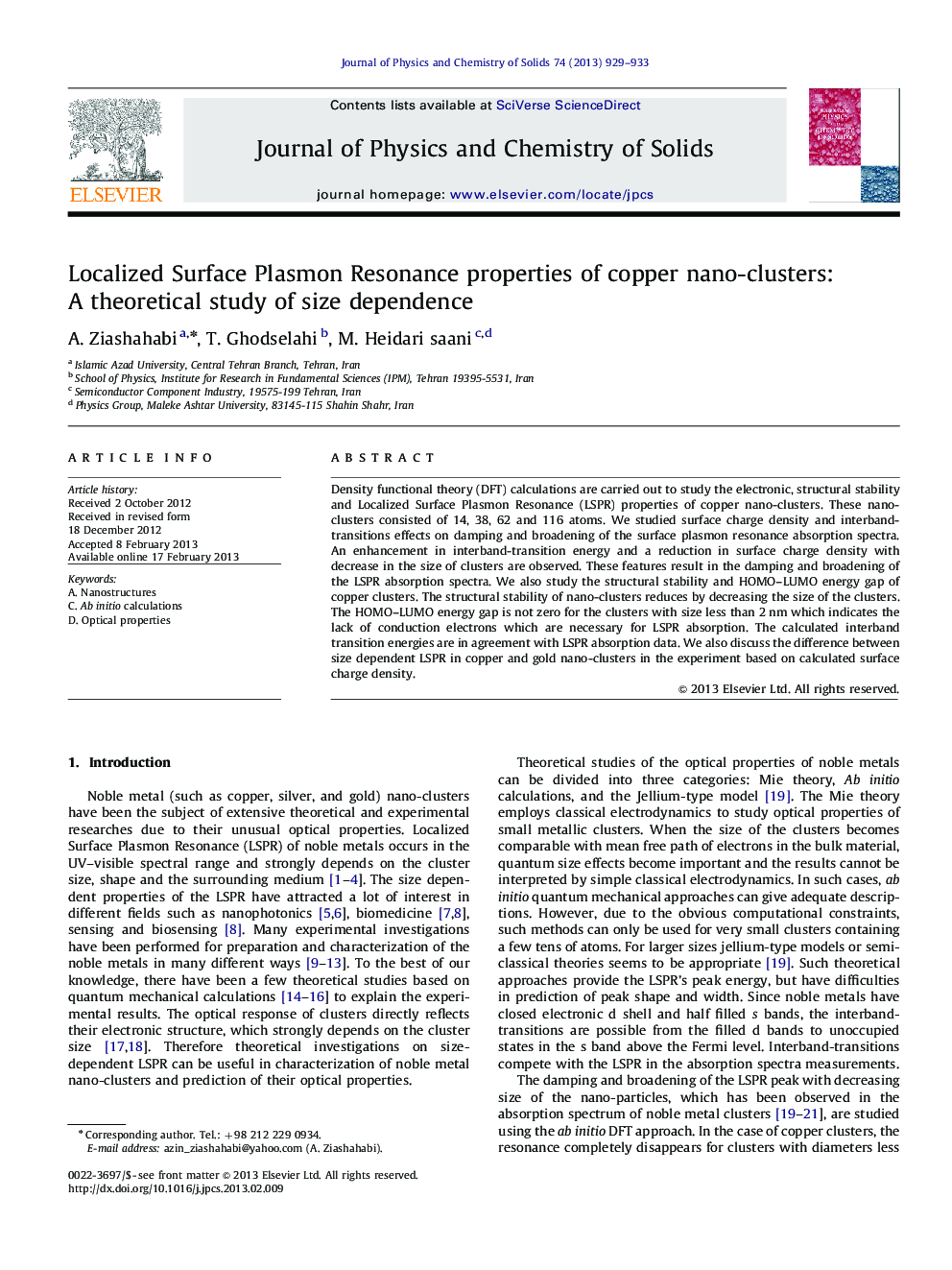| Article ID | Journal | Published Year | Pages | File Type |
|---|---|---|---|---|
| 1516323 | Journal of Physics and Chemistry of Solids | 2013 | 5 Pages |
Density functional theory (DFT) calculations are carried out to study the electronic, structural stability and Localized Surface Plasmon Resonance (LSPR) properties of copper nano-clusters. These nano-clusters consisted of 14, 38, 62 and 116 atoms. We studied surface charge density and interband-transitions effects on damping and broadening of the surface plasmon resonance absorption spectra. An enhancement in interband-transition energy and a reduction in surface charge density with decrease in the size of clusters are observed. These features result in the damping and broadening of the LSPR absorption spectra. We also study the structural stability and HOMO–LUMO energy gap of copper clusters. The structural stability of nano-clusters reduces by decreasing the size of the clusters. The HOMO–LUMO energy gap is not zero for the clusters with size less than 2 nm which indicates the lack of conduction electrons which are necessary for LSPR absorption. The calculated interband transition energies are in agreement with LSPR absorption data. We also discuss the difference between size dependent LSPR in copper and gold nano-clusters in the experiment based on calculated surface charge density.
► LSPR and electronic properties of copper nano-clusters were studied. ► The structural stability of the clusters reduces by decreasing the size. ► Copper clusters with sizes below 2 nm show a non-metallic character. ► Size dependent surface charge density and interband-transitions were calculated. ► We argued about the reason for damping and broadening of the LSPR.
